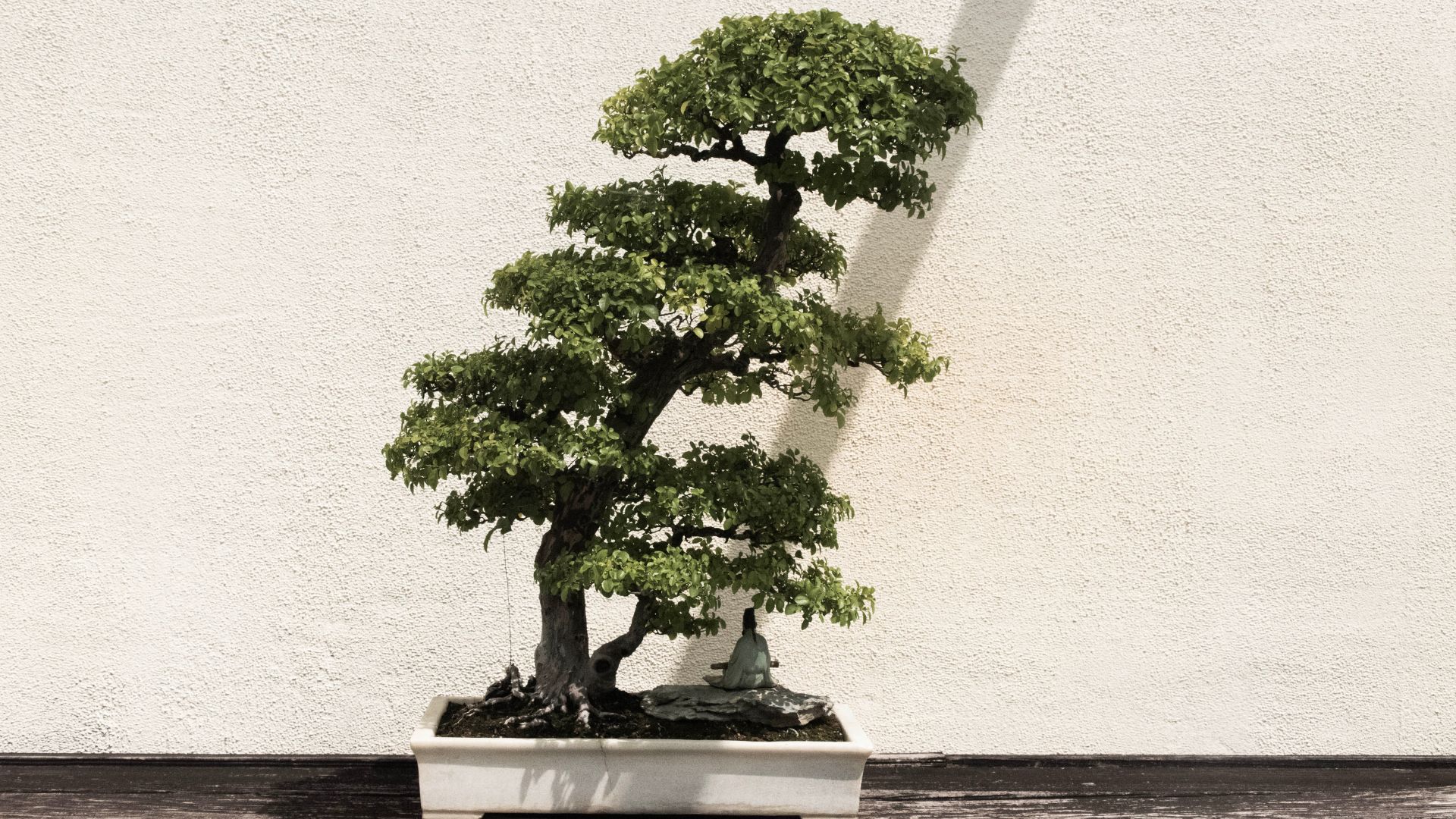The best way to enhance your indoor decor is by adding plants. Even though every plant looks amazing, some take things to a whole new level.
One example is the spectacular bonsai. This art of shaping and training plants so that they look like miniature trees has been popular for a long time.
If you have difficulties choosing one for yourself, I’ll show you the 8 best indoor bonsai trees.
Let’s get started!
1. Jade Plant Bonsai
[table id=817 /]
Are you a fan of jade plants? If so, you can actually have one jade plant in the form of a miniature tree. The species used for this purpose is known as Portulacaria afra or the Elephant bush plant.
It’s renowned for its small densely packed succulent leaves that look absolutely fantastic when the plant is grown as bonsai.
This bonsai has low watering needs because its leaves can store water, so water only when the soil dries out entirely.
Place it next to a sunny window so that it can receive enough bright light throughout the day. The sure sign that your Jade plant bonsai receives enough light is when the leaf tips turn red.
2. Ginseng Ficus Bonsai
[table id=818 /]
One of the most popular bonsai trees for beginners is the captivating Ficus bonsai. What makes it so special is that it is super easy to train and has way lower care requirements than other common bonsai trees.
Ginseng bonsai has a fat trunk and will get that bonsai look even when it’s still young. You can grow it in a sunny spot but it also tolerates lower light conditions.
Interestingly, the oldest bonsai tree in the world belongs to this ficus species.
Here’s a video on how to make bonsai from the Ficus retusa plant:
3. Norfolk Island Pine
[table id=819 /]
If you like pine trees, you should consider growing Norfolk Island pine as bonsai. Technically, it’s not a pine species but it definitely looks like one!
This bonsai is very sensitive to waterlogged soil, so you’ll need to give it water only when the topsoil dries out.
If you have a spot in your home that doesn’t receive too much direct light, it will work for Norfolk Island pine. Those who live in USDA zones 10 through 11 can keep this bonsai outdoors.
4. Malayan Banyan Bonsai
[table id=820 /]
Here’s another type of ficus that can be trained into a miniature tree. It will fit perfectly into any design because of its splendid grayish smooth bark and small bright foliage.
Similarly to the Ginseng ficus, Malayan Banyan doesn’t need full sun exposure and it’s easy to train into bonsai.
5. Juniper Bonsai
[table id=821 /]
I’m sure everyone has heard of Juniper bonsai. These cruciferous trees look amazing in nature and I dare say even better when grown as bonsai.
These are frost-hardy plant species so you can keep this bonsai outdoors if you live in USDA zones 3 through 11.
Luckily, Juniper bonsai tolerates indoor conditions and can last a long time in such an environment.
But you’ll need to be careful because this bonsai is toxic to cats. If you have a furry friend, make sure to keep your miniature Juniper out of reach.
6. Chinese Elm Bonsai
[table id=822 /]
Here’s another popular indoor bonsai, the Chinese elm bonsai. It’s adorned with fascinating gray to reddish-brown bark and oval-shaped green foliage.
Light requirements of this bonsai are pretty high so you’ll need to find the sunniest spot in your house.
However, you should ensure some shade if your Chinese Elm bonsai receives full sun during hot summer afternoons.
This bonsai responds well to pruning no matter which season you do it in. Here’s a video on how to do it:
7. Desert Rose
[table id=823 /]
If you prefer flowering plants and would like to add a splash of color to your indoor design, Desert rose bonsai is all you need.
The chubby trunk looks absolutely fantastic in combination with tubular pink or red blossoms, green foliage, and twisted roots that appear above the soil surface.
One of the best features of this type of bonsai is that it shows excellent tolerance to drought, so if you don’t have much time to spend caring for your bonsai, this is the plant for you.
If you live in USDA zones 11 or 12, you can keep your Desert rose bonsai outdoors during warmer months and then transfer them indoors for overwintering.
8. Ponytail Palm Bonsai
[table id=824 /]
If you want a tropical vibe in your home, consider growing the Ponytail palm bonsai. Don’t let the name confuse you; this isn’t a true palm but rather a succulent species.
You’ll get a palm-like plant that tolerates drought well because it can store water like other succulents – a win-win situation!
The Ponytail palm bonsai performs best in sandy soils because these soil types have good drainage; waterlogged soils can lead to rotting in these palm-like plants.
You can repot this bonsai every 2-4 years to ensure new nutrients and improve overall health.
By growing any of these bonsai trees in your home, you’ll improve the aesthetics and make it more beautiful!

